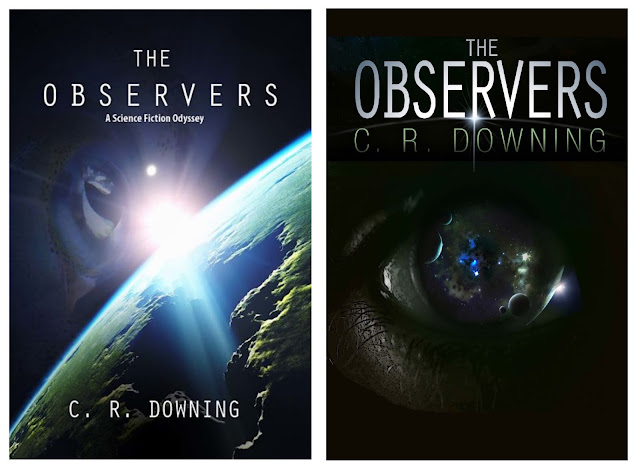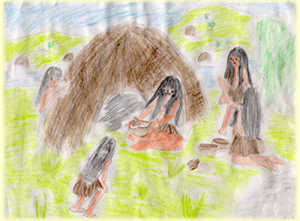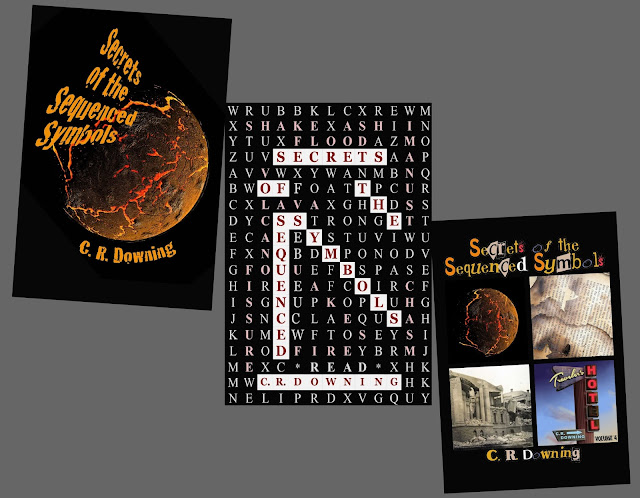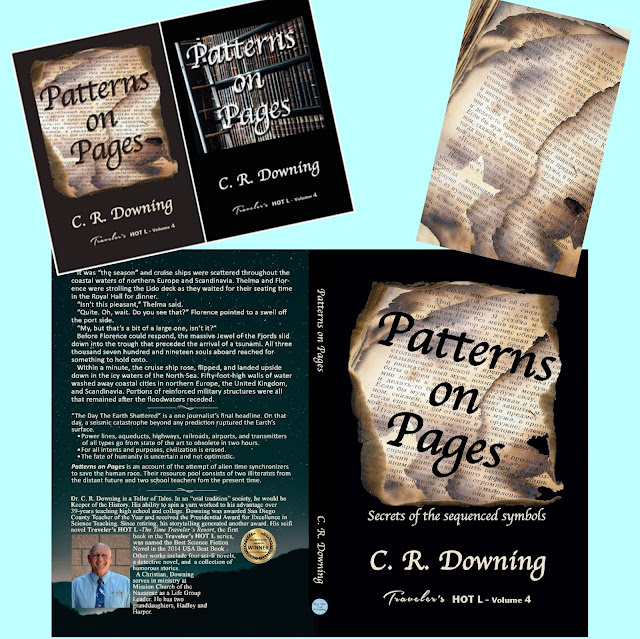In my last blog, described the process I followed for the cover evolution for three books I' had published. In this blog we’ll look at three elements of book cover selection:
1) Book under contract;
2) All books in a series;
3) The cover is just plain wrong.
2) All books in a series;
3) The cover is just plain wrong.
If you are looking for a contract with an established publisher, you probably won’t have the option of auditioning an artist or an idea for your cover. You might, but the odds are not in favor of those options. My second book with Koehlerbooks, The Observers – A Science Fiction Odyssey, will be released December 2014. Koehlerbooks has a unique approach to many of their covers—they offer two options and visitors to their website can vote on the option they like the best.
Books Under Contract
I liked the one on the right a lot, but the original had eyelashes--see photo above, something the characters did not have. Who knows if a bit more contrast and no eyelashes from the get-go and . . .
Here’s the result of the vote for The Observers. And the winner is…
Here’s the result of the vote for The Observers. And the winner is…
I think potential readers did a fine job. The cover captures the essence of the book without giving away anything significant in the plot. It also includes the visual drama of the faded alien eye (observing!) with the flash of an unknown sun as it rises over the horizon of an unnamed planet.
To close this part of the discussion, a New York Times Best Selling friend of mine under contract with a large publishing house was shown two version of the same cover art for each of her books. She was asked for her opinion, but it was worth only one vote.
All Books in a Series
Chances are good that if you don't already have an idea for a series of stories, you will have a series in mind at some point. What do you do about the covers for books in a series?
Since I've already set up the idea of a triad in this post, here are three options for book covers in a series. There is always the option of a different cover for each book in the series. I'm not going to spend time on that option because individual book covers are discussed in part 1.
A common cover for each book in the series--only the title is different.
While this isn't common, some authors use this choice. There is no doubt in a reader's mind if a given book is part of a series.
A theme--similar layout and "feel"--for all covers in the series.
This choice may be the most common marketing ploy.
A common element only for all books in the series. This can be overt.
Other authors choose subtle, almost subliminal commonalities.
In both cases, the idea of a book series is evident.
I have two series in some level of production. Mamba Mysteries are the stories featuring my private detective, Phil Mamba. My original thought for series integrity in the covers was to go black and white with the same detective silhouette in each. The books are set in the 1980s-90s, and Phil considers himself old-school in my ways.
Okay, but hardly compelling. So, I tried logos.
The MM logo was more of a publisher's imprint. When I get around to it, I'll add the silhouette logo to the Mixer Murder cover. It's already on Betrayal in Blue's current cover version.
My signature series is Traveler's HOT L. Below are the covers of the first four books in the series.
My intent was to have some version of the retro sign on each cover. I even made a logo. Dumb idea.
The cover is just plain wrong
To close this part of the discussion, a New York Times Best Selling friend of mine under contract with a large publishing house was shown two version of the same cover art for each of her books. She was asked for her opinion, but it was worth only one vote.
All Books in a Series
Chances are good that if you don't already have an idea for a series of stories, you will have a series in mind at some point. What do you do about the covers for books in a series?
Since I've already set up the idea of a triad in this post, here are three options for book covers in a series. There is always the option of a different cover for each book in the series. I'm not going to spend time on that option because individual book covers are discussed in part 1.
A common cover for each book in the series--only the title is different.
While this isn't common, some authors use this choice. There is no doubt in a reader's mind if a given book is part of a series.
A theme--similar layout and "feel"--for all covers in the series.
This choice may be the most common marketing ploy.
A common element only for all books in the series. This can be overt.
 |
| This is the cover for the boxed set of this series. The common elements in each of the four separate titles are obvious. |
In both cases, the idea of a book series is evident.
I have two series in some level of production. Mamba Mysteries are the stories featuring my private detective, Phil Mamba. My original thought for series integrity in the covers was to go black and white with the same detective silhouette in each. The books are set in the 1980s-90s, and Phil considers himself old-school in my ways.
Okay, but hardly compelling. So, I tried logos.
The MM logo was more of a publisher's imprint. When I get around to it, I'll add the silhouette logo to the Mixer Murder cover. It's already on Betrayal in Blue's current cover version.
My signature series is Traveler's HOT L. Below are the covers of the first four books in the series.
My intent was to have some version of the retro sign on each cover. I even made a logo. Dumb idea.
I decided to hybridize series cover ideas. Look closely at each Traveler's HOT L book cover. What's the common element?
(Answer at the end of this post.)
(Answer at the end of this post.)
I doubt if anyone wants to admit to making a major error on the cover of their book. I suspect it happens more often than you think.
Here's an idea for a book cover that's just bad. It's one of mine that will never be seen outside this blog.
Here's an idea for a book cover that's just bad. It's one of mine that will never be seen outside this blog.
 |
| Four pages of names and one page with California DMV information. Five pages total. Never even got the name of the book on this idea. Thank goodness! |
When a cover idea is bad, kill it!
I stumbled upon this blog 8 cover design secrets publishers use to manipulate readers into buying books. It gives excellent hints and examples of strong cover design.
Traveler's HOT L series common cover item.
 |
| Original Traveler's HOT L title fonts and the volume number are on all volumes subsequent to the original. |
Follow me on Twitter: @CRDowningAuthor and Facebook: https://www.facebook.com/CRDowningAuthor




























